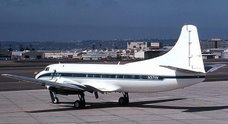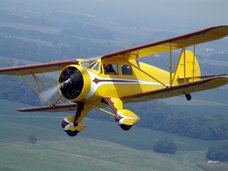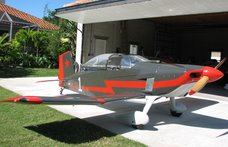Real or Just Another Cycle?
By Tim Busch
President, Iowa Aviation Promotion Group – www.flyiowa.org
President, Iowa Flight Training – IowaFlightTraining DOT com
By Tim Busch
President, Iowa Aviation Promotion Group – www.flyiowa.org
President, Iowa Flight Training – IowaFlightTraining DOT com
.
If you have been around the industry for a few years, you have probably been aware of “pilot shortages”. Many were imagined. In many cases, the truth was that there weren’t enough cheap pilots available. Recent studies have shown a need for at least 60,000 U.S. airline pilots over the next ten years. This time around, like previous cycles, we first noticed that instructors were being pulled up to the airlines. Then, the airlines lowered their entry standards. Minimums went from 1500 hours total time and a four year degree to just 600 hours and a multi-engine rating.
.
Cynics though, would say that it really isn’t a pilot shortage until the airlines raise entry-level pay. At the end of 2007, entry level pay for Masaba and United Express, typical entry pay for Iowa pilots looking to become airline pilots, was still $20,000 or less, increasing to nearly $40,000 after 36 months in service. This is difficult to accept for a student who has $50,000 in student loans to pay off. European and Asian airlines are now hiring at rates higher than U.S. airlines, drawing pilots out of the U.S. Recently though, the airlines have started increasing their entry level pay rates.
.
The increase in shared jet operators such as Flex Jets and Net Jets is also putting pressure on the airlines. New pilots are finding less hassle, bureaucracy, and better pay with the new operators. Also, routes tend to be more flexible and interesting. As the fractionals and wide-area charter operators expand, there will continue to be a growing need for biz jet pilots.
.
.
Cynics though, would say that it really isn’t a pilot shortage until the airlines raise entry-level pay. At the end of 2007, entry level pay for Masaba and United Express, typical entry pay for Iowa pilots looking to become airline pilots, was still $20,000 or less, increasing to nearly $40,000 after 36 months in service. This is difficult to accept for a student who has $50,000 in student loans to pay off. European and Asian airlines are now hiring at rates higher than U.S. airlines, drawing pilots out of the U.S. Recently though, the airlines have started increasing their entry level pay rates.
.
The increase in shared jet operators such as Flex Jets and Net Jets is also putting pressure on the airlines. New pilots are finding less hassle, bureaucracy, and better pay with the new operators. Also, routes tend to be more flexible and interesting. As the fractionals and wide-area charter operators expand, there will continue to be a growing need for biz jet pilots.
.
Iowa aviation operations are experiencing shortages as well. Corporations, charter & fixed base operators, and flight schools are having difficulty filling their needs. Our three aviation college programs have noted that retention of flight instructors makes it difficult to help feed enough new pilots to the industry.
.
All these points miss the basic need for flight training for business and recreational pilots. Studies funded by the Iowa Department of Transportation have shown a great economic benefit to the state due to aviation, and many of those pilots are not corporate or airline based, but contribute significantly to Iowa’s economy. We also need to grow the number of non-airline, non-corporate pilots to help our economy grow.
.
Although the number of pilots needed may be argued, the fact that the industry needs more pilots is not in dispute. On the supply side of the equation, we have very good data showing trends. The FAA publishes monthly pilot numbers, but keeps no formal trend data. I have been tracking these numbers for a while, and the trend is sobering. As of December 2007, Iowa has 845 flight instructors. Unfortunately, most of them are not teaching. We are not even overcoming attrition. If you look at the table below, you will see that Iowa lost 174 pilots in 2007. Worse, we have lost nearly 500 pilots since 2005. Perhaps more telling is the drop in student pilots, a bad sign for the future if we don’t change course.
.
Iowa is not alone. The trend holds true across the country. This clearly is an emergency situation for the aviation industry.
.
Iowa Pilots
.
All these points miss the basic need for flight training for business and recreational pilots. Studies funded by the Iowa Department of Transportation have shown a great economic benefit to the state due to aviation, and many of those pilots are not corporate or airline based, but contribute significantly to Iowa’s economy. We also need to grow the number of non-airline, non-corporate pilots to help our economy grow.
.
Although the number of pilots needed may be argued, the fact that the industry needs more pilots is not in dispute. On the supply side of the equation, we have very good data showing trends. The FAA publishes monthly pilot numbers, but keeps no formal trend data. I have been tracking these numbers for a while, and the trend is sobering. As of December 2007, Iowa has 845 flight instructors. Unfortunately, most of them are not teaching. We are not even overcoming attrition. If you look at the table below, you will see that Iowa lost 174 pilots in 2007. Worse, we have lost nearly 500 pilots since 2005. Perhaps more telling is the drop in student pilots, a bad sign for the future if we don’t change course.
.
Iowa is not alone. The trend holds true across the country. This clearly is an emergency situation for the aviation industry.
.
Iowa Pilots
.
There is good news in the data. One area that is definitely growing is the Sport Pilot. We believe that there is a lot of interest by people wishing to start with the Sport Pilot license and work up. It will take some time to get more Light Sport Aircraft into flight schools. Also, there are many great next generation aircraft coming online such as Cirrus, Diamond, and Columbia (now Cessna), and potential pilots want to fly these new airplanes.
.
There are many ways we help change the trend, grow more pilots, and help grow Iowa’s economy. To start, set a goal. How many pilots would you like to have in your community? Be aggressive. You might double the number of pilots in your county. Publicize your goal in your aviation community so everyone will buy in and work toward that goal. My goal for Iowa is to double the pilot population in five years. That would be nearly 12,000 pilots by the end of 2012. We can do it if we work together.
.
How do you reach your goal? The first step is education. Most people are not aware that it is even possible for them to become a pilot, or what steps they must follow in order to earn a license. Gleim makes an excellent brochure that I hand out to anyone willing to read it. Gleim wants to see these out in the field and will send you a box of 100 free if you call and ask. You can hold “Learn to Fly” events at your local community center and spread the word with flyers posted around town. I prefer to hold these events away from the airport, because the airport is unfamiliar territory and often not very friendly for newcomers. Once they understand what it’s all about, then I bring them in and they see a friendly face they have seen before.
.
I have found that ground school classes are a great way to get potential new students immersed in the aviation culture. Often, flight instructors don’t like to teach ground school classes. If you have trouble getting an instructor to teach ground school, please let me know. I teach weekend classes all over the state.
.
For most people, aviation is a completely new culture. It is unfamiliar and a bit scary because they don’t understand what it’s all about. The airport is a fun place to be, if you make it fun. Give them a reason to come and see what it’s all about and they will be more likely to think of aviation in their personal and professional lives. You can host flight breakfasts, type club fly-ins, aviation day camps for kids, swap meets, EAA Young Eagle flights, chili dinners, etc. to help draw people to your field. Your best promoters will your students and new pilots. They talk about what they’re doing and how much fun their having.
.
You might consider adding Sport Pilot training to your airport. With Sport Pilot, you provide a low-cost entry point to aviation, and these pilots will upgrade over time. Also, you will have twice as many new pilots for the same effort due to the 20 hour minimum requirement versus the 40 hour Private Pilot requirement.
.
There is good news in the data. One area that is definitely growing is the Sport Pilot. We believe that there is a lot of interest by people wishing to start with the Sport Pilot license and work up. It will take some time to get more Light Sport Aircraft into flight schools. Also, there are many great next generation aircraft coming online such as Cirrus, Diamond, and Columbia (now Cessna), and potential pilots want to fly these new airplanes.
.
There are many ways we help change the trend, grow more pilots, and help grow Iowa’s economy. To start, set a goal. How many pilots would you like to have in your community? Be aggressive. You might double the number of pilots in your county. Publicize your goal in your aviation community so everyone will buy in and work toward that goal. My goal for Iowa is to double the pilot population in five years. That would be nearly 12,000 pilots by the end of 2012. We can do it if we work together.
.
How do you reach your goal? The first step is education. Most people are not aware that it is even possible for them to become a pilot, or what steps they must follow in order to earn a license. Gleim makes an excellent brochure that I hand out to anyone willing to read it. Gleim wants to see these out in the field and will send you a box of 100 free if you call and ask. You can hold “Learn to Fly” events at your local community center and spread the word with flyers posted around town. I prefer to hold these events away from the airport, because the airport is unfamiliar territory and often not very friendly for newcomers. Once they understand what it’s all about, then I bring them in and they see a friendly face they have seen before.
.
I have found that ground school classes are a great way to get potential new students immersed in the aviation culture. Often, flight instructors don’t like to teach ground school classes. If you have trouble getting an instructor to teach ground school, please let me know. I teach weekend classes all over the state.
.
For most people, aviation is a completely new culture. It is unfamiliar and a bit scary because they don’t understand what it’s all about. The airport is a fun place to be, if you make it fun. Give them a reason to come and see what it’s all about and they will be more likely to think of aviation in their personal and professional lives. You can host flight breakfasts, type club fly-ins, aviation day camps for kids, swap meets, EAA Young Eagle flights, chili dinners, etc. to help draw people to your field. Your best promoters will your students and new pilots. They talk about what they’re doing and how much fun their having.
.
You might consider adding Sport Pilot training to your airport. With Sport Pilot, you provide a low-cost entry point to aviation, and these pilots will upgrade over time. Also, you will have twice as many new pilots for the same effort due to the 20 hour minimum requirement versus the 40 hour Private Pilot requirement.
.
The Iowa Aviation Promotion Group is a non-profit organization whose mission is to grow aviation by increasing the number of pilots, aviation users, and aviation supporters within the state. IAPG offers a number of programs intended to: increase awareness of the benefits of aviation, educate the public, increase the activity level of current aviation enthusiasts, increase the number of pilots and aircraft within the state, and provide opportunities for young and old to experience aviation in Iowa. We have set measurable goals to monitor the benefit of each of these programs.
.
One of our new programs at IAPG is the Blue Skies pilot growth program. We hope to help grow the number of pilots in Iowa with new advertising, local speakers, and more organized and visible training programs across the state. We will help connect airports, FBOs, flight schools, and flight instructors with pilots and new students. I hope you will consider joining IAPG to help us help you succeed. You can join online at http://www.flyiowa.org/.
to help us help you succeed. You can join online at http://www.flyiowa.org/.
One of our new programs at IAPG is the Blue Skies pilot growth program. We hope to help grow the number of pilots in Iowa with new advertising, local speakers, and more organized and visible training programs across the state. We will help connect airports, FBOs, flight schools, and flight instructors with pilots and new students. I hope you will consider joining IAPG
 to help us help you succeed. You can join online at http://www.flyiowa.org/.
to help us help you succeed. You can join online at http://www.flyiowa.org/. If you have questions, feel free to contact me, Tim Busch, at Info AT IowaFlightTraining DOT com
...****
(Left: The challenge. These are the pilot data from July 2005 through March 2008. As you can see, Iowa isn't building enough pilots. The only category showing any strength is Sport Pilot. We can do better.)



No comments:
Post a Comment